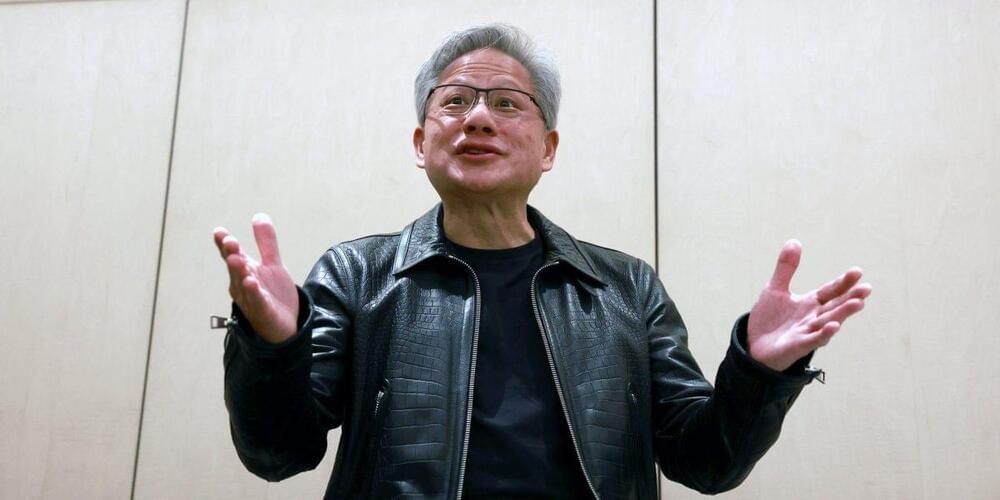This article examines Microsoft and Atom Computing in driving quantum computing to logical practicality, focusing on applications.



Advances in inertial confinement fusion and innovative modeling have brought nuclear fusion closer to reality, offering insights into high-energy-density physics and the early universe.
The pursuit of controlled nuclear fusion as a source of clean, abundant energy is moving closer to realization, thanks to advancements in inertial confinement fusion (ICF). This method involves igniting deuterium-tritium (DT) fuel by subjecting it to extreme temperatures and pressures during a precisely engineered implosion process.
In DT fusion, most of the released energy is carried by neutrons, which can be harnessed for electricity generation. Simultaneously, alpha particles remain trapped within the fuel, where they drive further fusion reactions. When the energy deposited by these alpha particles surpasses the energy input from the implosion, the plasma enters a self-sustaining “burning” phase. This significantly boosts energy output and density.

The wave-particle duality was demonstrated not only with electrons, but when it came to atoms and even molecules, things got complicated. Electrons are 1,800 times lighter than the lightest atom (something discovered by Thomson’s father J.J. Thomson) so they can more easily diffract through the lattice of a crystal.
Atom diffraction had so far been seen in reflection. The atoms were bounced off a surface that was etched to have a grating. The lines don’t need to be as thin as 10,000 times smaller than a hair, like the most important machine you’ve never heard of makes them. Grids with much larger lines, which could have been made in the 1930s, were enough to showcase this phenomenon. However, researchers haven’t been able to show the diffraction of atoms through a crystal until now.
In a yet-to-be-peer-reviewed paper, Carina Kanitz and colleagues from the Institute of Quantum Technologies and the University of Vienna demonstrated diffractions of hydrogen and helium atoms using a one-atom-thick sheet of graphene. The atoms are shot perpendicularly at the graphene sheet at high energy. This should damage the crystal but it doesn’t, and it’s the secret of this successful experiment.

A new study explores tetraquarks, predicts new exotic particles, and offers deeper insights into their complex structure and behavior.
A new study offers significant advancements in the understanding of tetraquarks — a rare and complex type of particle.
By developing a new approach that combines advanced mathematical methods with a simpler model of how particles interact, the researchers have made important discoveries about the inner structure and mass of these particles.
Scientists at the Large Hadron Collider (CERN), the world’s most powerful elementary particle booster, have discovered the heaviest form of antimatter ever observed. This discovery is as significant as previous achievements at CERN, in particular the discovery of the Higgs boson and studies of B-meson decay.
The ALICE (A Large Ion Collider Experiment) has discovered an antimatter particle, antihyperhelium-4. It is the “evil twin” of another exotic particle, hyperhelium-4. This form of antimatter consists of two antiprotons, an antineutron, and an unstable antilambda particle, which in turn contains quarks.
The discovery is important for studying the extreme conditions that reigned in the Universe less than a second after the Big Bang. It also helps us understand one of the biggest mysteries of physics, the problem of baryonic asymmetry. According to the theory, matter and antimatter should have existed in equal amounts after the Big Bang, and the mutual annihilation of these particles should have produced pure energy. However, the present Universe is composed predominantly of matter, and antimatter is preserved only in small quantities. The study of hyperhelium and its antiparticle may shed light on the causes of this imbalance.

Every second, 60 billion neutrinos pass through your thumbnail from the Sun alone!
Neutrino Detectors and the Pacific Ocean Experiment
In the search to understand the cosmos, neutrinos—subatomic particles created in nuclear reactions—have become critical clues to some of physics’ most complex questions. Produced in vast quantities by processes such as nuclear fusion in the Sun, neutrinos are hard to capture due to their weak interactions with matter. On Earth, advanced detectors have been built to study them, including Japan’s Kamiokande and the IceCube Neutrino Observatory in Antarctica. Now, astronomers are setting their sights on a new frontier for neutrino observation: the depths of the Pacific Ocean.

Entire atoms have been put through a classic quantum experiment for the first time and the breakthrough could lead to better detectors for picking up the gravitational waves that ripple across the universe.
By Alex Wilkins

When quantum electrodynamics, the quantum field theory of electrons and photons, was being developed after World War II, one of the major challenges for theorists was calculating a value for the Lamb shift, the energy of a photon resulting from an electron transitioning from one hydrogen hyperfine energy level to another.
The effect was first detected by Willis Lamb and Robert Retherford in 1947, with the emitted photon having a frequency of 1,000 megahertz, corresponding to a photon wavelength of 30 cm and an energy of 4 millionths of an electronvolt—right on the lower edge of the microwave spectrum. It came when the one electron of the hydrogen atom transitioned from the 2P1/2 energy level to the 2S1/2 level. (The leftmost number is the principal quantum number, much like the discrete but increasing circular orbits of the Bohr atom.)
Conventional quantum mechanics didn’t have such transitions, and Dirac’s relativistic Schrödinger equation (naturally called the Dirac equation) did not have such a hyperfine transition either, because the shift is a consequence of interactions with the vacuum, and Dirac’s vacuum was a “sea” that did not interact with real particles.

Special multi-layer mirrors guide the light through plates called masks, which hold the intricate patterns of the integrated circuits for semiconductor wafers. The light projects the pattern onto a photoresist layer that is etched away to leave the integrated circuits on the chip, according to a press release by LLNL.
The project also aims to investigate the primary hypothesis that the energy efficiency of existing EUV lithography sources for semiconductor production can be improved with technology developed for the novel petawatt-class BAT laser, which uses thulium-doped yttrium lithium fluoride (Tm: YLF) as the gain medium through which the power and intensity of laser beams are increased, as per the release.
Scientists have planned to conduct a demonstration pairing the compact high-rep-rate BAT laser with technologies that generate sources of EUV light using shaped nanosecond pulses and high-energy x-rays and particles using ultrashort sub-picosecond pulses.
What is the deepest level of reality? In this Quanta explainer, Vijay Balasubramanian, a physicist at the University of Pennsylvania, takes us on a journey through space-time to investigate what it’s made of, why it’s failing us, and where physics can go next.
Explore black holes, holograms, “alien algebra,” and more space-time geometry: https://www.quantamagazine.org/the-un…
00:00 — The Planck length, an intro to space-time.
1:23 — Descartes and Newton investigate space and time.
2:04 — Einstein’s special relativity.
2:32 — The geometry of space-time and the manifold.
3:16 — Einstein’s general relativity: space-time in four dimensions.
3:35 — The mathematical curvature of space-time.
4:57 — Einstein’s field equation.
6:04 — Singularities: where general relativity fails.
6:50 — Quantum mechanics (amplitudes, entanglement, Schrödinger equation)
8:32 — The problem of quantum gravity.
9:38 — Applying quantum mechanics to our manifold.
10:36 — Why particle accelerators can’t test quantum gravity.
11:28 — Is there something deeper than space-time?
11:45 — Hawking and Bekenstein discover black holes have entropy.
13:54 — The holographic principle.
14:49 — AdS/CFT duality.
16:06 — Space-time may emerge from entanglement.
17:44 — The path to quantum gravity.
——-
VISIT our website: https://www.quantamagazine.org.
LIKE us on Facebook: / quantanews.
FOLLOW us Twitter: / quantamagazine.
Quanta Magazine is an editorially independent publication supported by the Simons Foundation: https://www.simonsfoundation.org